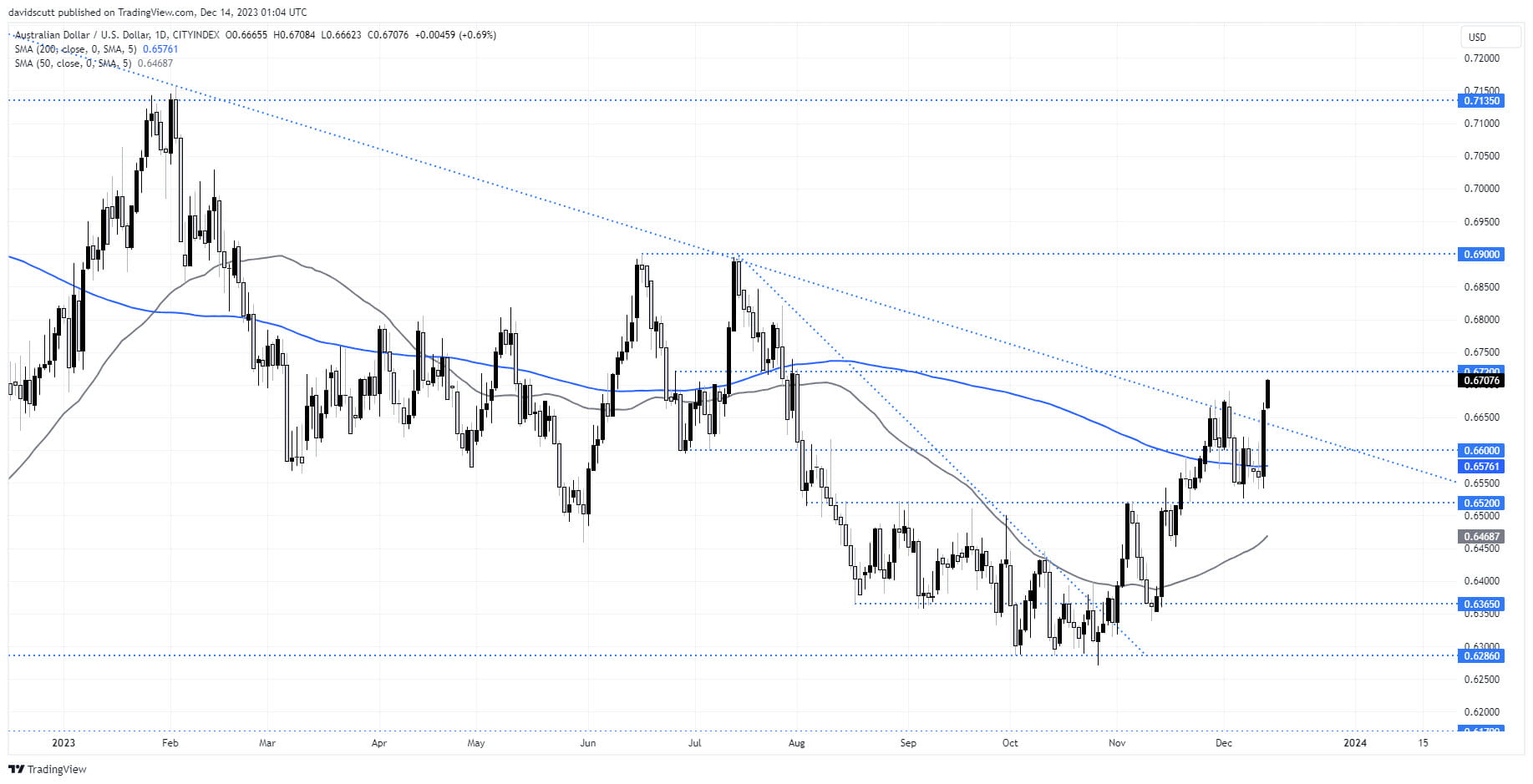
- Australia’s unemployment rate ticked up to 3.9% in November despite booming jobs growth
- The gradual loosening in labour market conditions reduces the risk of wage inflation
- AUD/USD has risen to multi-month highs, reflecting little need for the RBA to do anything right now
Booming jobs growth, record labour force participation and a gradual loosening of labour market conditions with the unemployment rate ticking up to 3.9%. For policymakers attempting to deliver a soft economic landing, Australia’s jobs report for November could barely have been better. Despite the uptick in unemployment, AUD/USD has risen to fresh multi-month highs, breaking key downtrend resistance in the process.
A beautiful set of numbers for AUD/USD
Australian employment increased by 61,5000, six time greater than the level expected by economists. 57,000 were full-time roles. Despite the huge jobs beat, labour force participation hit a record 67.2%, seeing the unemployment rate tick up a tenth to 3.9%.
Broader measures of labour market slack such as underemployment and underutilisation rose by a larger amount, lifting by 0.2 and 0.3 percentage points respectively to 6.5% and 10.4% respectively. Given the inverse relationship with wage pressures, the gradual increase points to the diminishing risk of sustained wages and higher inflationary pressures.
RBA can sit back and relax over summer
For the RBA, this is a beautiful set of numbers, showing the kind of supply-side dynamics that will make policymakers feel comfortable there’s little need to increase interest rates further. Continued strength in hiring also reduces the need for the bank to signal impending rate cuts, as revealed by the Federal Reserve on Wednesday.
AUD/USD hits multi-month highs
Given the domestic considerations, on top of the unwind in the US dollar on the back of narrowing yield differentials, it’s not surprising to see AUD/USD multi-month highs on the back of the jobs report.
It’s now convincingly broken the downtrend it’s been stuck in since early 2022, paving the way for a test of resistance at .6720. A break there would bring the double-top around .6900 into play. RSI is not overbought on the daily and MACD has crossed over from below above 0, signalling building upward momentum.
For further upside from these levels, it would likely take other major Asian FX names to break to new highs against the USD, such as JPY and CNH. With around six rate cuts priced into the US Fed funds rate curve for next year, there may also be vulnerabilities to data questioning the need for easing of that magnitude.

-- Written by David Scutt
Follow David on Twitter @scutty



